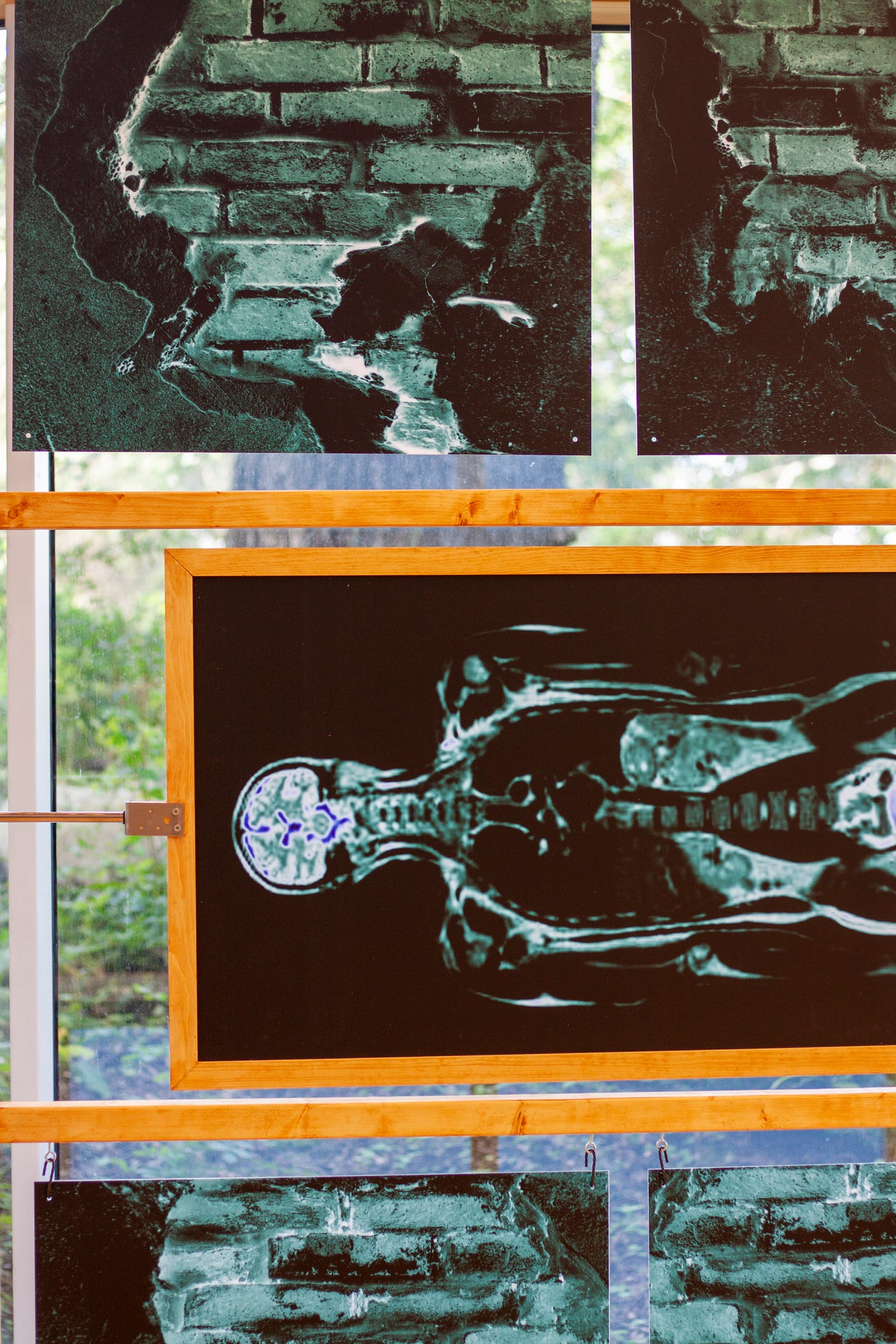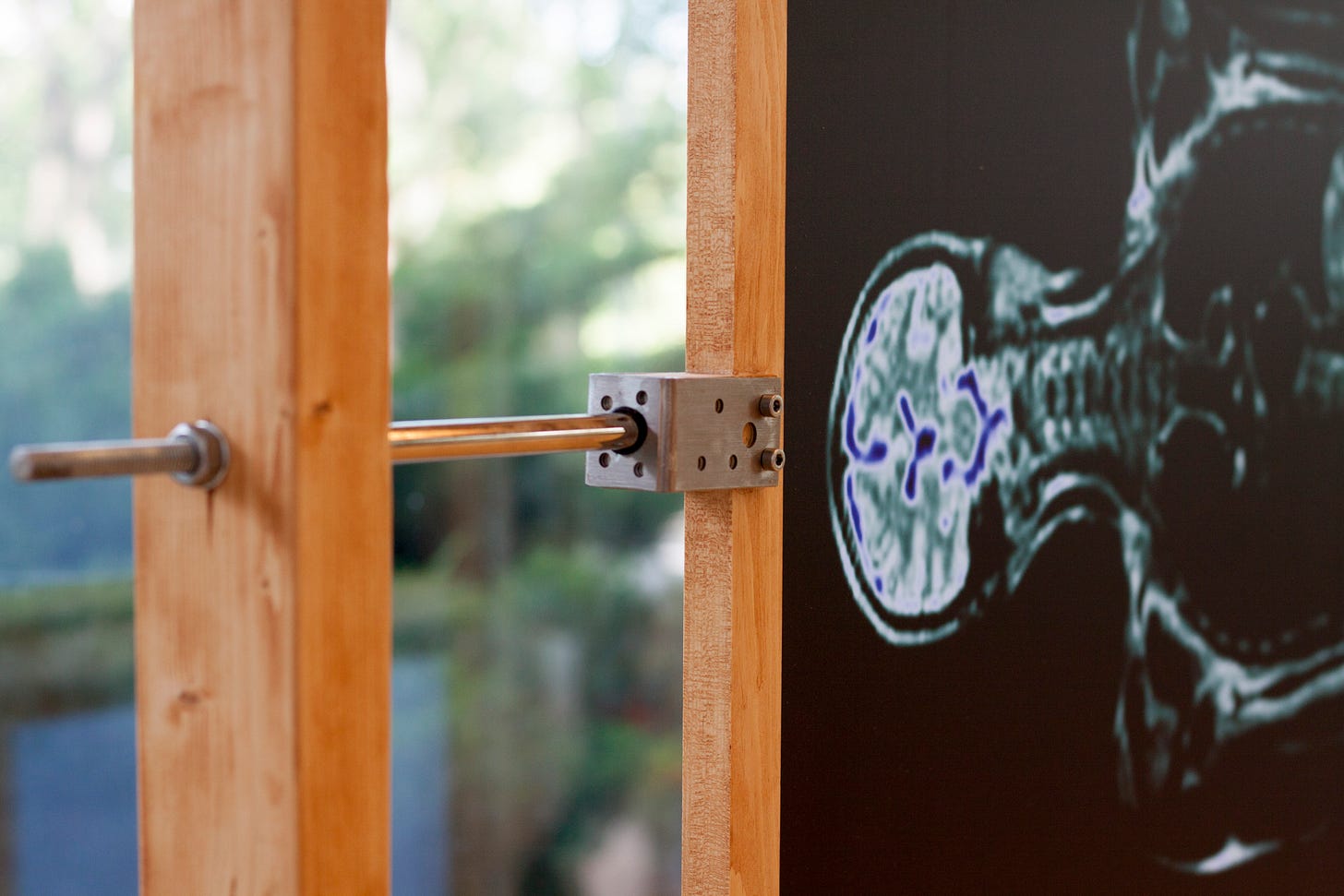Imagining Past Survival
A guest article contributed by the founder of Sense Writing, Madelyn Kent
If you are a regular or if you have landed on Tarantula: Authors and Art welcome. This month we are inspired by the works of Stockholm based Irani artist Zahra Zavareh. Last year, when the meaningless killing of #MahsaAmini occurred and the the "Zan Zendegi Azadi" movement began in Iran, Zavareh had a hard time creating. When the world with all of its issues hits a personal spot, like the world has been doing this past month, it is not unusual to feel blocked and uninspired. We are therefore extremely thrilled to have our guest writer this November, Madelyn Kent, who is the creator of Sense Writing, a groundbreaking neuro-sensory approach to writing that anyone can use to unleash their creativity. When our bodies and minds are hijacked from pleasure or creativity, Kent gives us hope and permission to create despite the terrible events that the outside world imposes on us and over which we have no control. She gives us tools and a container to escape survival mode, create, and heal rather than being constantly stuck in pain. At the end of this article, she includes a Sense Writing sequence, exclusively for our readers, that you can try for yourself.
If a friend forwarded you this article, welcome; if you like it, share it or why not subscribe?
The world keeps changing and changing us, and recently (like maybe the last few years…) it can feel like we’ve been forced into a state of nearly constant survival mode.
And when we find ourselves in this state, it can feel natural to disconnect from our deepest creative urges.
It can become easy to forget that our creative urges are a necessity for our survival.
These urges are essential for who we are.
One of the discoveries that I keep making during this time, but which often becomes easy to overlook, especially when we get overwhelmed:
Regular life and creative life have different needs.
When it feels hard to get through a day, we rely on habit to keep pushing through the next chore or challenge. We become attuned to the need to survive more than to any other need — and we often become great at it, whether we like it or not.
But in this state, when we (and our nervous systems) are so intently focused on survival, it can feel impossible to remember that this approach is the opposite of what our creative lives require.
Because survival mode is so dominant, it ends up dominating our creative life.
This pattern can happen in surprising places.
While working for decades as a professional theater artist and teacher in New York, I realized that there were issues of anxiety and blocks plaguing my peers and students that noone seemed to be addressing on a foundational level. In fact, many of these issues seemed to be made worse by existing approaches to writing and teaching.
I was at a crossroads and I knew that I was not going to find the answers I was looking for if I stayed in the systems that I was in. I left my hometown, a teaching job at New York University’s Tisch School of the Arts, and a literary agent, in order to learn how to get to the root of these issues.
I knew that I had to go back to the body.
I left to study and become a practitioner of the Feldenkrais Method of Somatic Education. Though I had studied other forms of somatics before, when I started to practice Feldenkrais, it felt like a drop of ink on the veins of a leaf, lighting up old and new pathways of inquiry that I’d been immersed, and sometimes tangled, in for years in my creative work.
The developer, Moshe Feldenkrais, was a major pioneer of something called “neuroplasticity,” and he worked with the movement of the body to change and rewire the brain and nervous system.
During my training, in this sea of people, lying on the floor, rolling, and moving, I saw a room of people returning to a deep parasympathetic-dominant state of learning we all once knew.
Watching adults turning into toddlers– and experiencing it myself– was my eureka moment.
The body was the resource for safety and discovery.
It was the way most of us learned to walk, in this textured and implicit process that served us well, allowing us to adapt to infinite situations that we encountered as we grew. Back then, we were guided not by survival or sweat or ambition, but by pleasure and discovery.
I began to see deep connections between how the nervous system learns and grows and the creative process itself.
The connections continued and when I returned to New York, I started to bring it all together into Sense Writing, a merging of writing and movement sequences that teaches students to have an intimate dialogue with their own nervous systems, and bring themselves into explorative states of flow.
In my years of teaching Sense Writing, I’ve taught in environments where this exploratory state of flow and creativity was especially susceptible to being hijacked by survival mode.
I don’t think I would have ever developed Sense Writing in its current level of depth and complexity if I hadn’t been teaching in such volatile environments, where I saw people’s individual voices and stories in danger of getting washed away in an atmosphere of fear.
It kinda feels like now.
And I’ve learned that in times of uncertainty, it’s especially essential to stay connected to ourselves and our stories. And to remember the different needs that creative life requires.
It feels especially critical now to pay closer attention to when we veer too much into “regular life” survival mode— and to find ways to explore and play and delve into this urge, with all its complexity, pleasure, sorrow, and mystery.
After all, through this long period of rolling crisis, it is natural to disconnect from our deepest creative urges.
But these creative urges are part of the foundation of our survival.
And the best part is, all you need is the floor and a notebook. You can click below to try a Sense Writing sequence.
"Comparing Free Writes @sensewriting"
To learn more about Sense Writing, please go to the following link sensewriting.org
This month is dedicated to the work of Zahra Zavareh. To read other articles inspired by her work, click on the following link/s:







